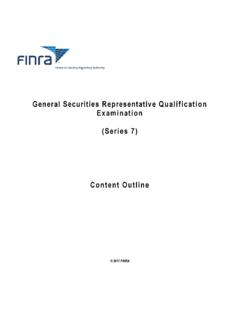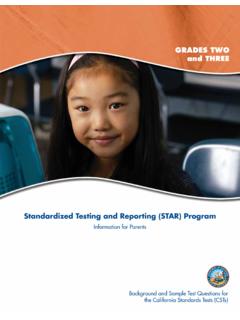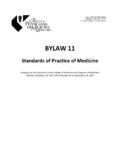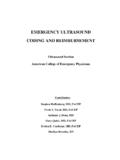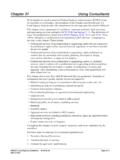Transcription of 165-29: Performing a 1:N Case-Control Match on Propensity ...
1 Paper 165-29 1 Performing a 1:N Case-Control Match on Propensity score Lori S. Parsons, Ovation Research Group, Seattle, Washington ABSTRACT A Case-Control matched analysis is often used in observational studies to reduce selection bias and approximate a randomized trial. A Propensity score is the predicted probability of an outcome. It has been shown that a sample matched on Propensity score will be similar for all the covariates that went into computing the Propensity score . Thus, matching on the Propensity score can reduce the selection bias in an observational study.
2 This paper presents a macro that performs a 1:N Case-Control Match on the Propensity score ; the analyst is allowed to specify the number of controls to Match to each case . The macro makes "best" matches first and "next-best" matches next, in a hierarchical sequence until no more matches can be made. Each control is selected at most once. The final matched-pair samples contain both closely matched individual pairs and balanced case and control groups. In this paper, SAS/STAT LOGISTIC procedure code is given to create the Propensity score .
3 The matching macro is explained and used to create several Propensity score matched-pair samples. The examples were run under SAS Knowledge of logistic regression analysis and SAS macro language is required. INTRODUCTION Observational Studies In large observational studies there are often significant differences between characteristics of the treatment group (cases) and the no treatment group (controls). Such differences should not exist in a randomized trial. These differences must be adjusted for in order to reduce treatment selection bias and determine treatment effect.
4 There are several methods to reduce this type of bias and make the two groups more similar. One method is to perform a Case-Control matched analysis. Propensity Scores The SAS/STAT software allows users to perform multivariate logistic regression with the LOGISTIC procedure. PROC LOGISTIC options allow users to calculate and save the predicted probability of the dependent variable, the Propensity score , for each observation in the data set. This single score (between 0 and 1) then represents the relationship between multiple characteristics and the dependent variable as a single characteristic.
5 In the case of an observational study, the dependent variable might be a treatment group. The Propensity score would then be the predicted probability of receiving the treatment. Propensity scores are being used in observational studies to reduce bias. Three commonly used techniques are subclassification on the Propensity score , regression adjustment using the Propensity score , and Case-Control matching on the Propensity score . This paper focuses on Case-Control matching on the Propensity score . The 1:N Case-Control Matching Macro The matching macro presented here (OneToManyMTCH) is an update to a macro previously presented by the author (SUGI 26 Proceedings, 2001).
6 The original macro makes a 1:1 Case-Control Match on the Propensity score . It has been used to perform Propensity score matched analyses for many published papers. The SAS macro presented here uses a similar algorithm, but is updated such that the user can specify the number of controls matched to each case (1:N). An individual control is picked at most one time. Both the original 1:1 and the new 1:N matching macros are greedy algorithms; a set of X cases is matched to a set of Y controls in a set of X decisions.
7 Once a Match is made, the Match is not reconsidered. That Match is the best Match currently available. The algorithm makes "best" matches first and "next-best" matches next, in a hierarchical sequence until no more matches can be made. Best matches are those with the highest digit Match on Propensity score . First, cases are matched to controls on 8 digits of the Propensity score . For those that do not Match , cases are then matched to controls on 7 digits of the Propensity score . The algorithm proceeds sequentially to the lowest digit Match on Propensity score (1 digit).
8 This will be referred to as the 8 1 Digit Match . In the 1:N matching macro presented here, all cases are initially matched to their best control in the first iteration of the 8 1 Digit Match . The set of matched cases is then matched to the set of un-matched controls in N-1 additional iterations of the 8 1 Digit Match . If a case does not have N matched controls, it is removed from the set of matches at the time it fails to receive a matched control . The corresponding control is also removed from the set of matches.
9 The control is added back to the pool of un-matched controls, and allowed to Match to another case . SUGI 29 Posters 2 METHOD Example Data The data presented here are from a large observational database of myocardial infarction patients. The cases (N=4,705) received treatment. The controls (N=15,212) did not receive treatment. Table 1 describes the baseline characteristics of the original population. All of these baseline characteristics were independent variables in the multivariate logistic regression model to create the Propensity score .
10 Differences between groups were evaluated using the rank-sum test for continuous data and the chi-squared test for binary data. For every covariate except race, there was a significant difference between the cases and controls (p < ). Create the Propensity score Below is the SAS PROC LOGISTIC code for the multivariate logistic regression that was run to compute the Propensity scores; one score per patient. In this example, the Propensity score is the predicted probability of having the treatment (revasc).










